Keylocker sounds like exactly the kind of game made for me. Stylish cyberpunk aesthetics, a rebellious spirit, rhythm-based mechanics, and influences from classic RPGs? Sign me up, I’m there! Regrettably, Keylocker never landed for me for many reasons.
Keylocker stars B0B0, or Bobo as she prefers to be called, a rebellious musician living in a world where music has been banned. We start the story as she breaks out of prison thanks to her hacker brother, a move so explosive she destroys part of the prison in the process. The siblings then team up with a jukebox robot found in a scrapheap, heading out to take on The Man and bring back music to the people.
It’s a cheesy concept that’s been seen countless times before, but Keylocker knows the exact tone it needs to sell you on it. Bobo is a fun character, full of brash self-confidence and a refusal to accept the system as it stands. It’s not hard to get swept up in her schemes, even when they’re painfully stupid and suicidal on paper.
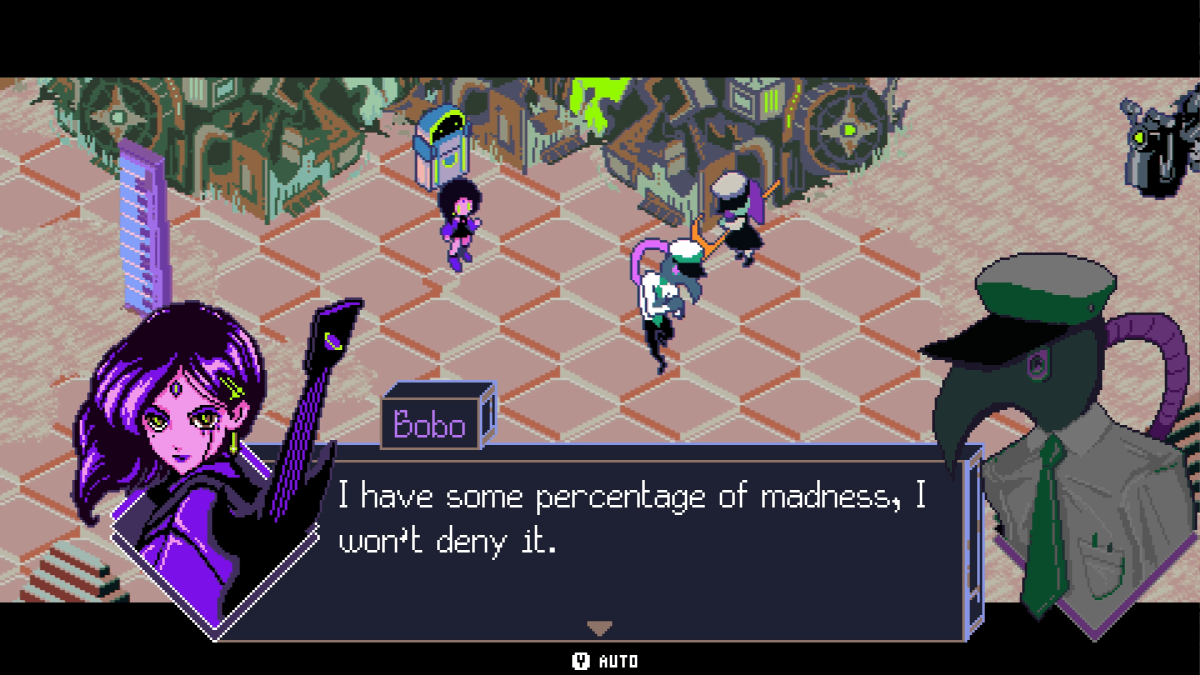
The world itself is also interesting. It takes place on a colony around Saturn, one where shadowy cabals maintain harsh rules and restrictions that they claim are required to stop the whole colony crashing into the planet. The cast is a quirky bunch of weirdos of various unexplained humanoid races, from robots to hippo children, and where people can replace their heads on a whim, including the religious order’s tendency to replace their heads with cones.
It’s all presented in a scratchy, unrefined art style that feels like the developers manually drew every pixel. This perfectly fits the game’s rebellious attitude, where technical skill isn’t required for artistic expression, and where the rough edges give everything personality.
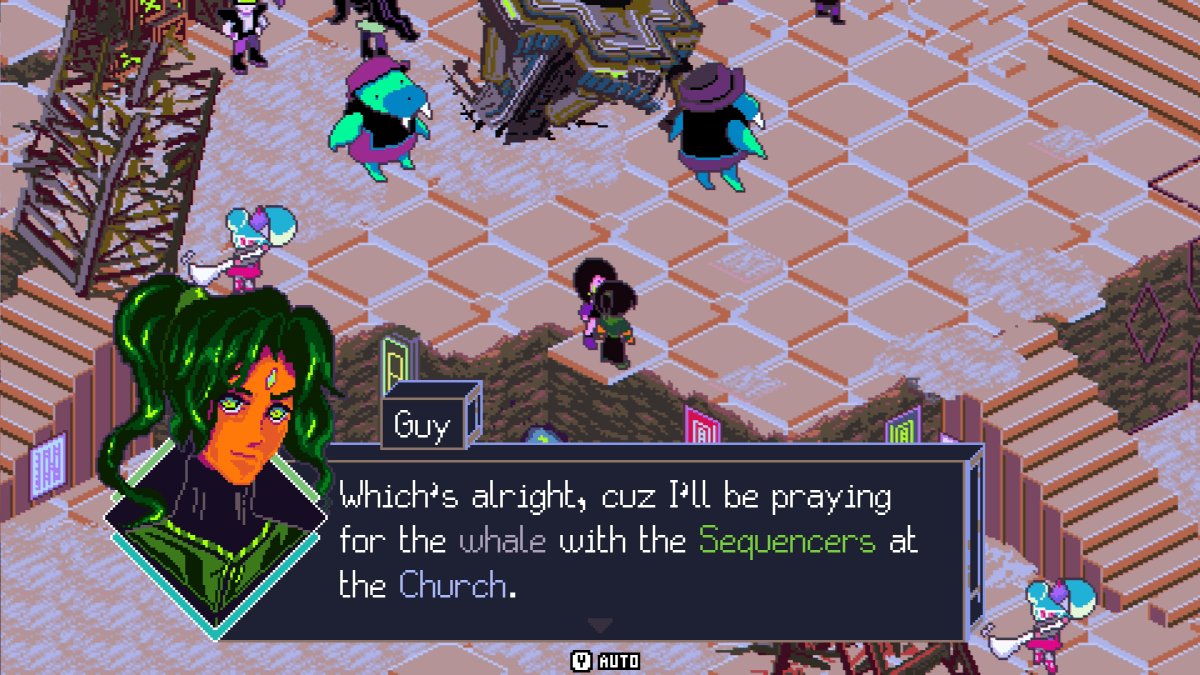
Sadly, this is where my love of the presentation ends, as while the world has an interesting concept and the cast is likeable, the story is poorly told. The world is high concept, but few of its ideas are communicated properly. Strange terms are casually thrown around without much explanation to the point where it can feel weird for the sake of being weird. I couldn’t help but compare it with Paradise Killer, another game awash with a neon sheen in a world of bizarre concepts, but I latched onto that much quicker than I did with Keylocker.
A big part of this is done to how the early story plays out. Sure, Bobo is a likeable protagonist, but her early quests don’t have much direction to them. They’re little more than fetch quests for characters she has a prior relationship with but we as the audience don’t get much background on. Next thing you know, I’m in a weird dimension in the desert collecting a vitally important music box that will change the fate of the world. I’m not entirely sure how I ended up there.
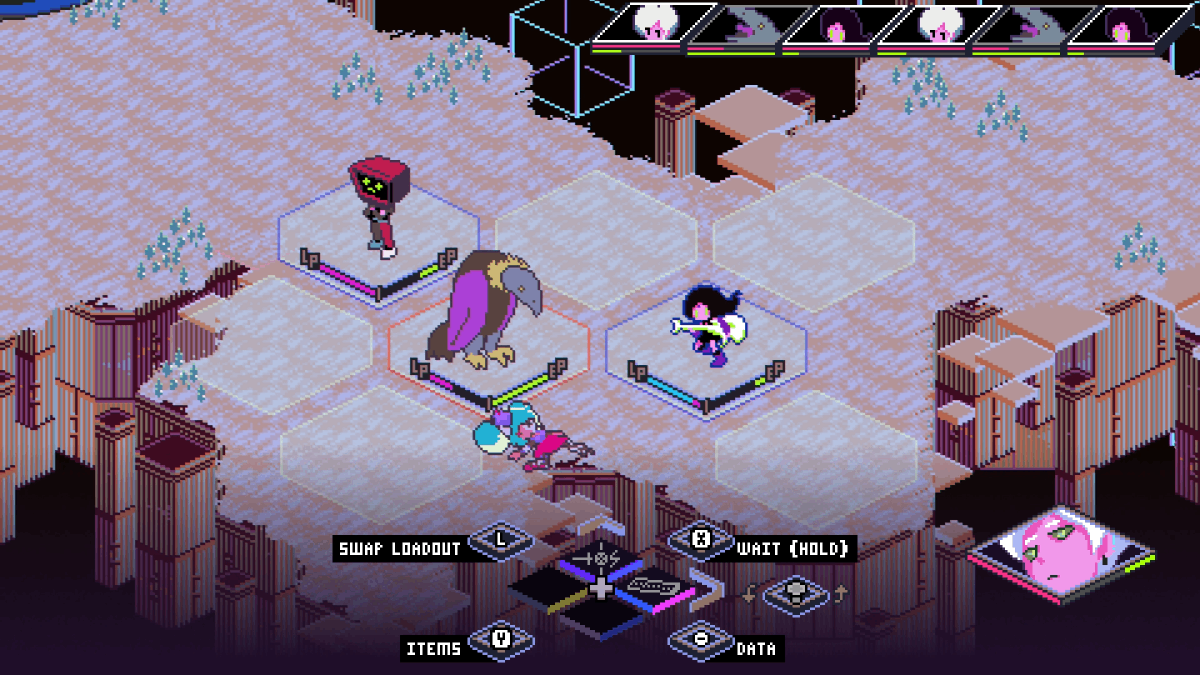
I’d be able to go along with this if the gameplay felt good but this is the other major problem with Keylocker. Combat is turn-based, taking place on a grid-based system where positioning is important. In addition, the combat utilizes timed hits, where pressing a button at the right time can boost attack or defense depending on who’s attacking. Imagine a cross between Mega Man Battle Network and Super Mario RPG for a vague idea of what to expect here. However, two fundamental problems become obvious early on. The first is that the grid movement feels functionally useless and the timed hits are frustrating to execute.
Let’s start with the grid movement. Combat takes place on a series of hexagons, and your moves will attack a certain shape around you. Some moves will attack in a line, others in an arc immediately in front of you while others encircle you. All perfectly acceptable. However, movement costs a turn, and suddenly the problems arise.
There’s no system of movement and an action, like other games with this sort of movement. You perform an action or you move, you can’t do both. Movement effectively places you in front of an enemy ready to be attacked, but you can neither attack nor set up a counterattack as a trap for them. That has to wait until your next turn and can easily be derailed with an enemy movement or an attack that forces a change to your position. It’s a baffling system and I have no idea why they did it this way as it killed all semblance of strategic movement.
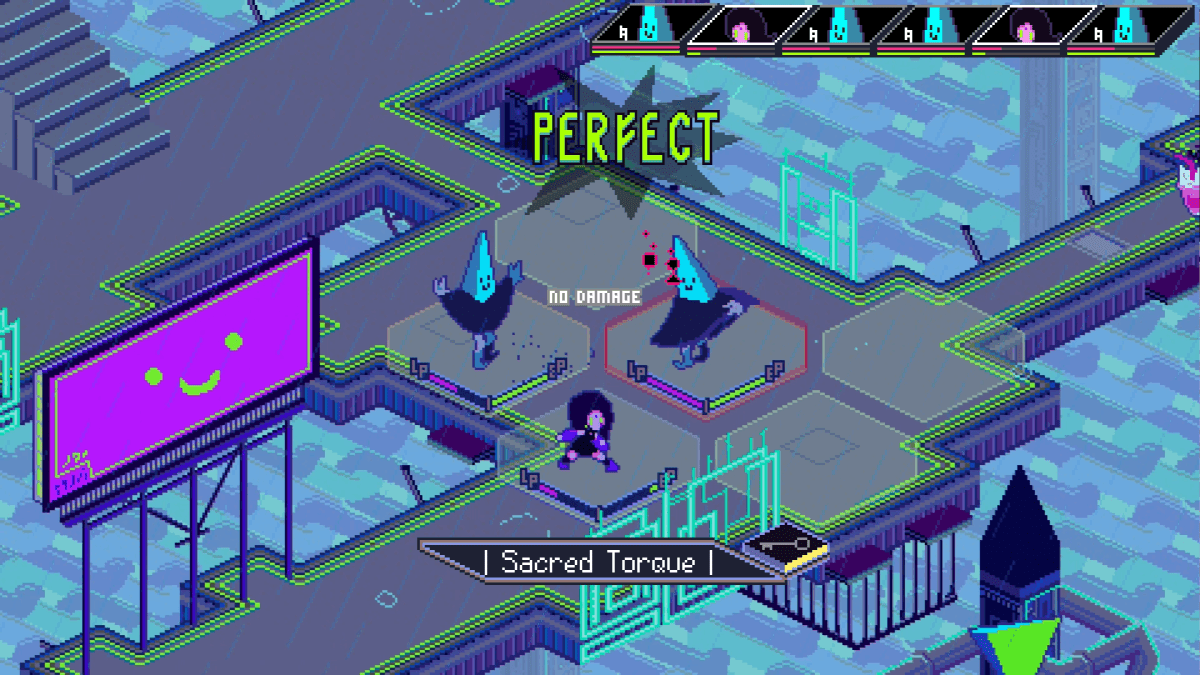
The timed hits are the real maddening issue though. I have enjoyed plenty of games with this mechanic, from assorted Mario RPGs to last year’s Sea of Stars. But what made timed hits such a fun system in those games was how it felt like a reward. Getting the timing right meant extra damage or negating damage you receive. In Keylocker, they feel essential and missing them is a punishment. Miss a parry and you see almost your entire health bar deleted. Miss an attack and chip about 1HP off them.
This is bad enough, but the timing windows are extremely tight. Characters will flash to indicate when to hit the button, but universally it seemed like tapping when you see the flash was always a miss. It got to the point where I felt I had to anticipate the flash and press it slightly ahead of its appearance. However, this had its own problems as attack windups are dragged out longer than necessary, which made all my hits early. I tried working off the sound effects but even they ended way too early.
It’s a massive contrast to the more intuitive timed hits in other games. I never once struggled to grasp when to time a Mario stomp or a Moonerang swipe, and any I missed felt like my own poor timing. In Keylocker, I was constantly dropping the timings and could never truly figure out what I was doing wrong. Even adjusting the difficulty failed to change much.
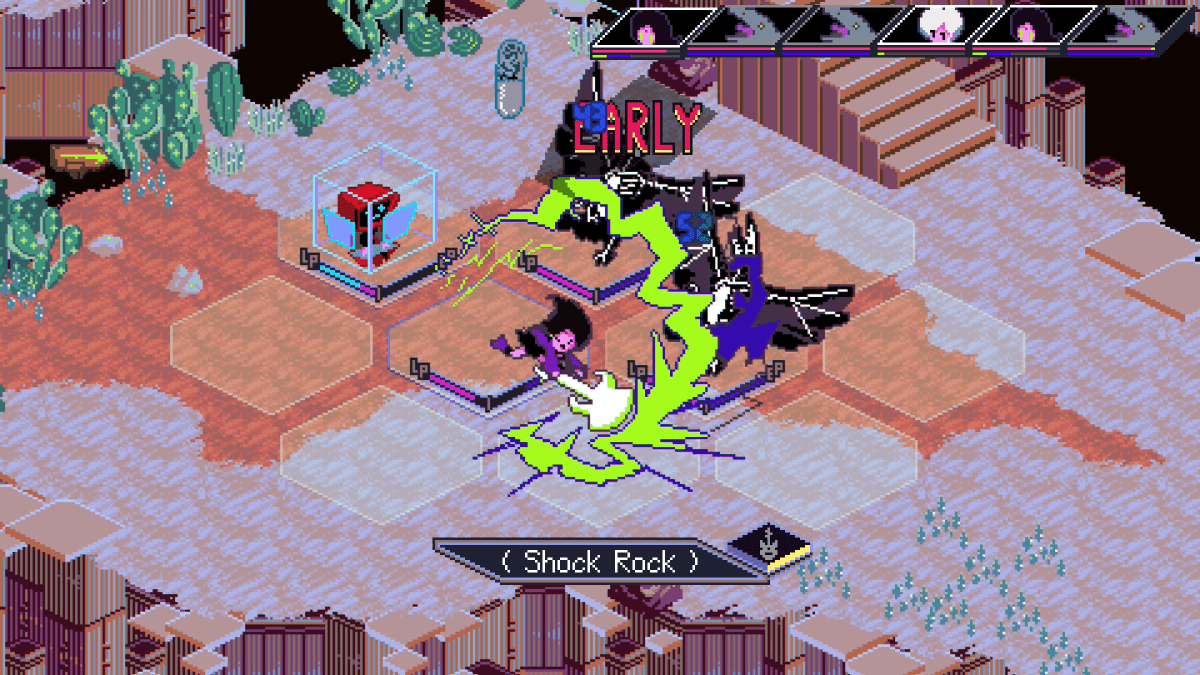
And this is the problem with Keylocker. At almost every turn it reminded me of better games. Whether it’s the better execution of rhythm-based combat and rebellious rock-and-roll spirit in Hi-Fi Rush, the timed hits of Super Mario RPG or the movement of any half-decent strategy RPG, it made me constantly wish I was playing any of these games instead. It’s a shame, because it’s clear that a lot of love and passion went into this game. There’s a solid foundation for Keylocker to work with here, but what was built on top of it is shaky.
Ultimately, Keylocker was a frustrating experience. There’s some solid writing and a world that I’d love to explore further. Sadly, it’s buried under an unintuitive combat system and poor plotting for it to realize its full potential.
Keylocker is out now for Switch, PS5, Xbox Series X/S and PC.
Keylocker
Keylocker has some interesting concepts but they're buried beneath an unintuitive combat system and poor narrative plotting.
Pros
- The opening hour is almost entirely silent, which is meant to illustrate the supression of music but made me feel like my game was broken.
- Some instrument-based moves are jarringly out of sync with the main soundtrack, which also feels like a missed opportunity.
- Equipment stats were entirely incomprehensible, and I'm still not sure what health points are called either.